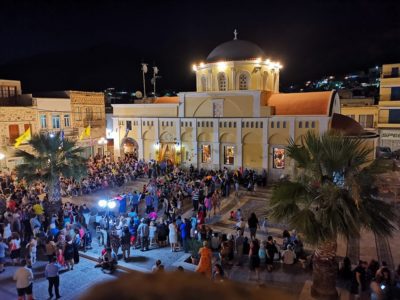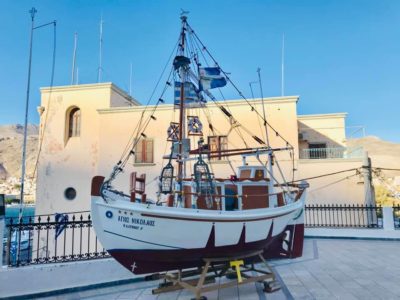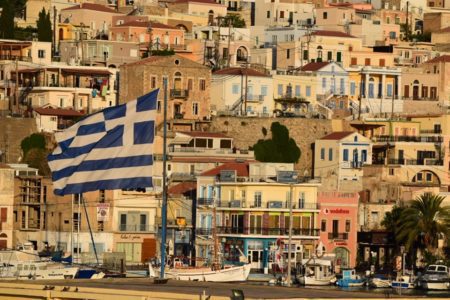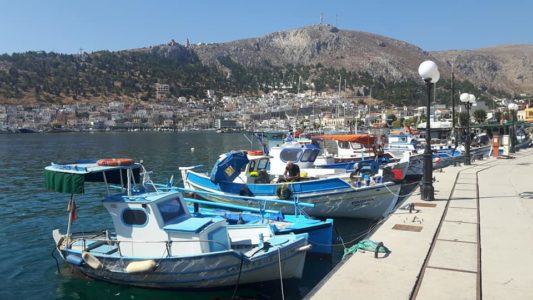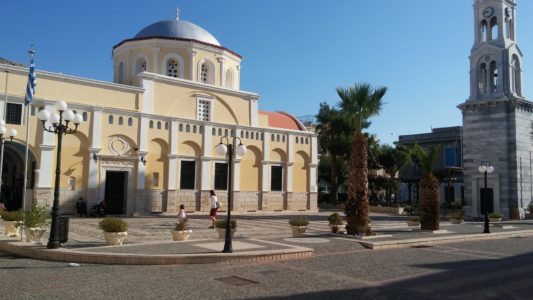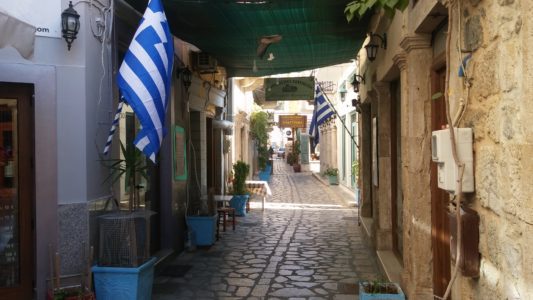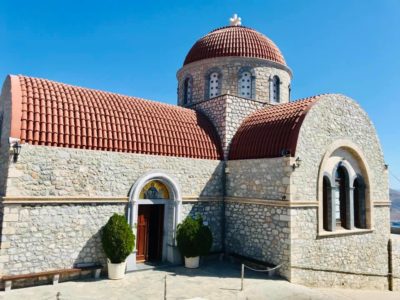Visit Pothia and Hora town
Capital and port of Kalymnos, the Greek town Pothia lies at the foot of two hills in narrow plain that ends in the huge natural port. The entrance from the sea is particularly striking for white and pastel-colored houses, on two or three levels, which form a striking contrast with the harsh gray stone island. Inhabited by about 11,000 habitants, it is a small but very lively and dynamic place, always crowded featuring traffic chaos.
Special Places in Pothia
Port architecture dominates the neoclassical style with beautiful buildings that surround Anastasis Square where the municipality of Kalymnos, the Nautical Museum and the Cathedral are located. The Cathedral iconostasis is the work of sculptor Giannouli Chalepa, from the island of Tilos, while the icons and frescoes were made by local artists. At the Maritime Museum of Kalymnos are exposed a series of objects and tools representative of the daily life of fishermen, as tools for sponge fishing, boats and costumes as well as beautiful photographs.
The pier is decorated with statues, such as the famous siren or Poseidon, all works of local artists Michalis Kokkinos and daughter Irini. On the waterfront is an interesting church of St. Nikolas that greets us with its majestic silver dome. Do not miss the visit to one of the many factories of sea sponges. Kalymnos has a great history of sponge divers and trade.
The streets Venizelou and Maximou are very narrow and traffic here is always very intensive (and very greek). It is a good idea to get lost among the narrow streets that show everyday life; but also examples of neo-classical architecture with decorative balconies and pastel colored houses.
Culture and history in Pothia
Close to Platia Kyprou is the Archaeological Museum housed in the villa Vouvalis. There are antique furnishings collections ranging from the Archaic period to the Hellenistic mostly coming from the necropolis of Damos. The most precious item is the Lady of Kalymnos, a bronze statue that returned to the island from the Archaeological Museum of
The Castle of Crysocherià, as it is called the Castle of the Knights of St. John, is located about 1 km from the center of Pothia on the road that leads to Hora. The castle was abandoned in the late fifteenth century, it is a nice spot and offer great view. Further up is Hora town, once the capital of Kalymnos, today it is so close to Pothia that seems to be a single city.
Hora of Kalymnos
Hora old town, unlike Pothia, has been able to maintain their traditions and is characterized by narrow streets, the white houses and many churches, among them is the most relevant Panagia Kecharitomeni, a basilica with the iconostasis on which Greek general lift up the flag to announce that Kalymnos became the territory of the Greek State.
Above the hill it is located a great Saint Savvas church. St. Savvas, the New, is the patron saint of the Greek Island of Kalymnos, where he lived during the last twenty years of his life as the priest and spiritual father of the nuns of the Convent of All Saints. He was a great ascetic, confessor, iconographer and miracle-worker. He is one of the recently recognized saints in the Orthodox Church. Numerous miracles and healings have since been attributed to him.
Beauties around Hora
From Hora a flight of steps leads to the ancient citadel of Pera Kastro, a Byzantine fortress that was used as a refuge from pirate attacks; and which could accommodate up to 1200 people. Inside, there are still some remains of ancient dwellings and 9 small churches. Under the Mount Flaska is the Cave of the Nymphs, also called the cave of the seven virgins. Legend says that in this cave hid from the pirates seven girls which were never founded; archeologist found inside the cave offerings to the nymphs.
On the road to the village Panormos, it is located the archaeological site of an ancient city dating back to the greek-roman period. Here, on the top of the ruins of the temple of Apollo is a church of Jesus from Jerusalem built by the Byzantine Emperor Archadius. Besides the museums, churches and archeological sites, the thing that most characterizes the capital of Kalymnos is the daily life of Kalimnian people.


